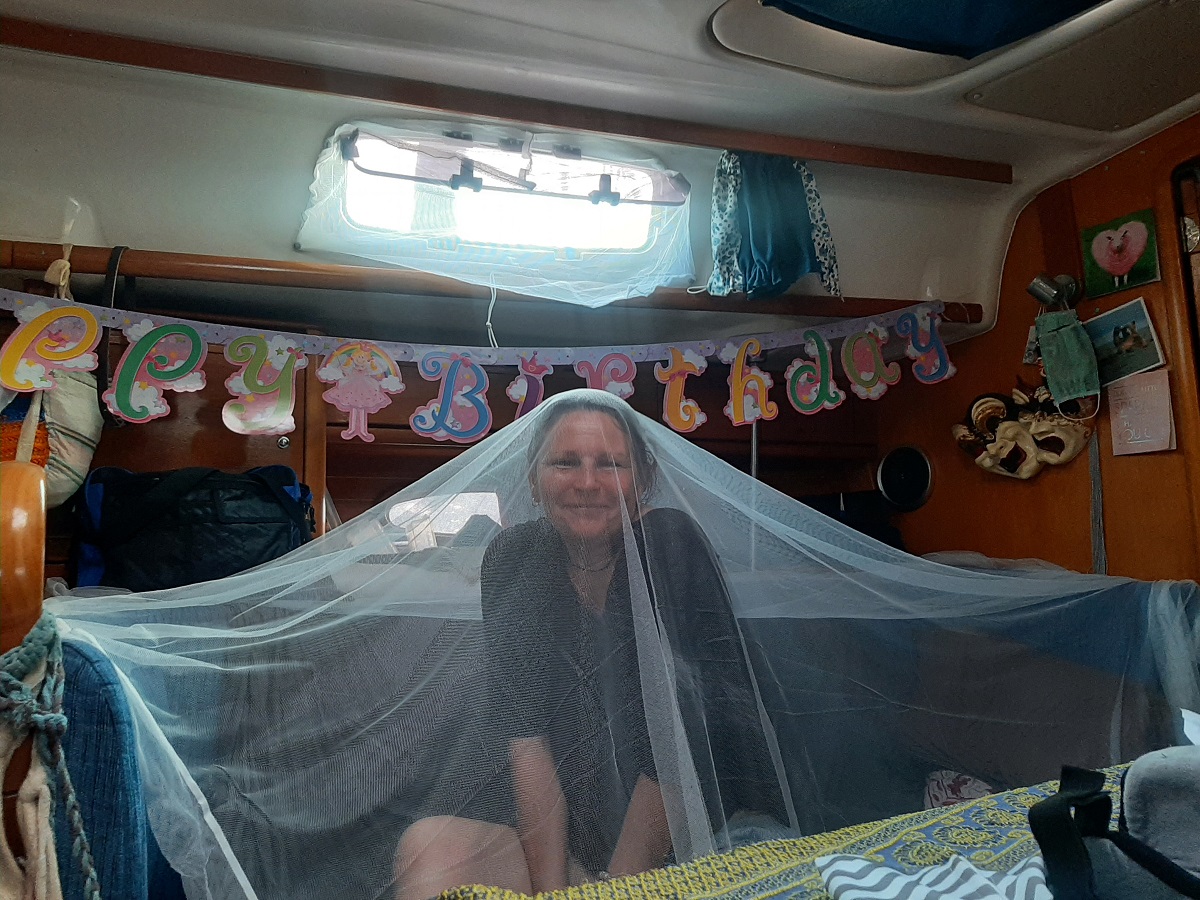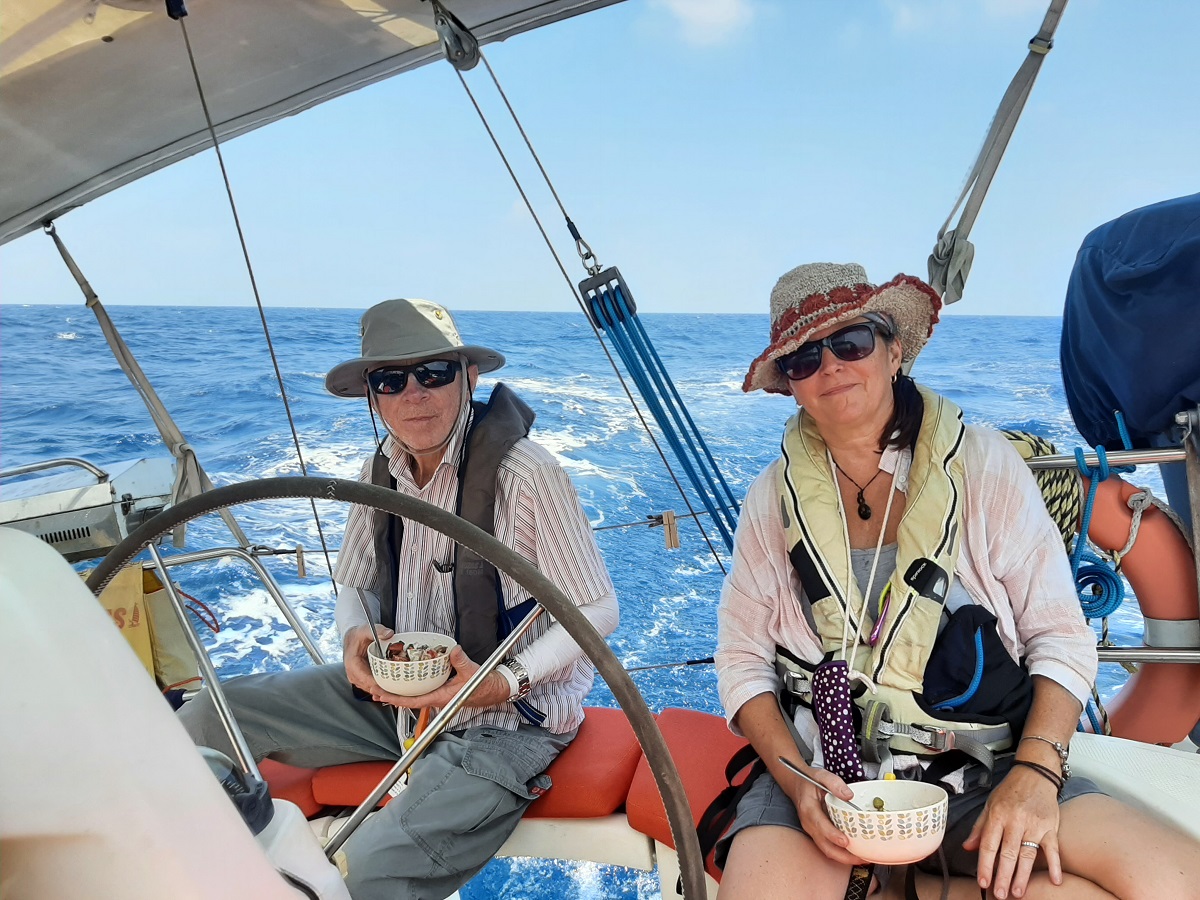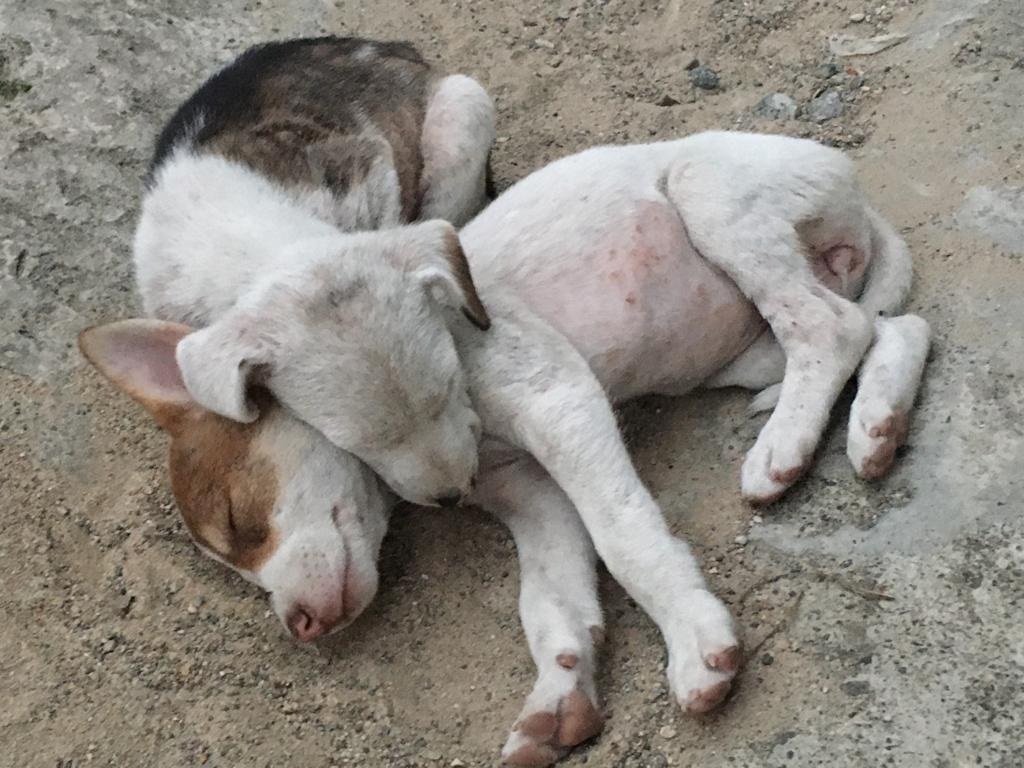
Into the Big Blue!
It was bittersweet leaving India. This is the country that gave us some amazing travel experiences before holding us in its lockdown grasp. It’s almost like we’ve been Indian’s honoured guests, then prisoners, then welcomed back again. I used to tell people that Oman was my favourite country to visit – spectacular nature, dramatic mountains and desert, friendly locals, and easy to visit from Dubai. Of course, since then I’ve fallen in love again with Aotearoa New Zealand, but India has moved to the top of my list now. The country is much more diverse than I previously expected – India has almost as many official languages as Europe – 22 v 24. And what a land of contrasts! You can have a full thali lunch at our regular haunt “mom’s kitchen” for Rp50 (65 cents), then walk across the road to the Hyatt and pay eight times that just for a coffee.
We’d made some good friends during our 2020 sojourn and I felt guilty that we didn’t manage to catch up with everyone I would have liked to have. But the top priority was getting Aroha ready to cross oceans again, and that task took virtually all our time and left very little to take a breath and relax.
Our crew Peter – a good friend from Dubai days – flew in a few days before our planned departure and we’d saved a few jobs that were easier or safer to do with an extra pair of hands. Climbing the mast used to be Helen’s domain, but she’s never been too fond of heights and so I took this task over from her a couple of years ago. I use two harnesses connected to two lines to the top of the mast for this – Helen and Peter taking one each on separate winches for safety. I climb as much as I can, so that they don’t have to take too much of my “big boned” body on the manual winches. Each time I go up the mast, I’m surprised with how much it all flexes. It’s designed to move that way with the forces, and I’ve become more confident in the rigging’s strength since I’ve started seeing it up close and personal, rather than peering up at it from deck level. A few years ago, I was doing a regular check at deck level and discovered that a cotter pin was missing from the forestay (the wire that goes from the top of the mast to the front of the boat – one of four cables that holds the mast up), meaning that just a few bumps in the sea possibly stood between us and the mast coming down. It scares me that such a tiny piece of stainless steel could result in such a disaster and it’s reiterated my penchant for regular checks.

With the rigging checked, we put the sails back on, wiggled out a bit of stiffness in the foresail furler (the device that allow us to roll and unroll the front sail) and we were ready for “sea trials” under sail. Although the open sea is just a few miles from the marina, getting to it would have required a painful authority permission process. Having enough stress in our lives already, we opted instead to potter up and down immediately outside the marina. This area is quite shallow and confined, nevertheless we spent a couple of hours tacking backwards and forwards, gaining a bit of impromptu practice dodging the local ferries at the same time.
Of course, we were preparing the boat for the passage, but also more importantly, ourselves. It’s been forever since Helen and I have sailed and Peter’s never joined us for more than a weekend before. I was pleased that it was all bit by bit starting to feel quite familiar once more. All the preparation that we’ve been doing over the past weeks to get Aroha ready was also renewing our own confidence in her and her systems. As we got closer to departure day, I found myself thinking “I hope nothing goes wrong on the passage”, but then correcting myself to “I hope we’re prepared for when things go wrong”. I wasn’t meant to sound defeatist as it may read, but rather that I was feeling confident in our preparations and our ability to take on the unexpected.


On the morning of our intended clearing out we woke to a message from our Thai agent to say that we needed to have a negative RT-PCR test taken 72 hours before our departure from India. We weren’t aware at the time that this also was required by the Indian authorities as part of the clearing out process, so in some ways it was fortuitus that we ended up delaying our departure by a day and racing around Kochi to get our tests done and results back. We had paid £80 each to get them done in the UK – and about £3 to get the same done in India. Please do not talk to me about the logic of having negative tests before leaving a country, or more than two weeks of ocean isolation before arriving at another.
So, a day later than planned over two years since arriving, we headed to Willingdon Island where all the maritime departments reside to finally clear out. We got bounced around between Immigration, Customs and the Port Authority, with each giving conflicting advice on what is required and in which order we should do it, but clearing out went relatively smoothly in only three or four hours. We even managed to squeeze in a tasty paratha lunch at the staff canteen where we’d had our first meal on arrival day two years ago! The three-step process ended up involving about ten steps, more being added as we had to repeat visits to certain officials to request the crucial document that was needed for the next set of officials that had been overlooked the first-time round! We joked that we were making good progress – “step seven of three completed!” Indians frequently acknowledge the state of their bureaucratic processes and claim that they haven’t changed processes that the Brits left 75 years ago! Though frustrating, the system works somehow and the many sheets of paper that were filed in in hardcopy when we cleared in over two years ago were promptly found and, as the Indians are fond of saying, the “needful” was done.
With exit stamps in passports and the ever-important Certificate of Clearance in hand, we headed back to Aroha, setting the alarms early to depart on the outgoing tide the following morning.
From the marina there’s a narrow and shallow channel that leads to the big shipping channel, and then the open sea. There’s a lot going on and it was “all eyes on deck”, and a sigh of relief once we reached the open sea and we could turn to start down the coast to take us under India and Sri Lanka and on towards Thailand.


The first few days travelling down the west coast of India has lots of fishing boats and this gave Peter the opportunity to buddy up with Helen on night watches – getting in some practice before he felt comfortable to do watches by himself. The timing was quite nice – we find that it takes about three days of a passage until we settle into the routine of waking (and being alert!) at funny times of the night and catching up on sleep during the day. A few days in I thought how strangely decadent it seemed. It’s perfectly acceptable to finish breakfast, yawn, and announce to fellow crew that you’re a bit tired and are going for a mid-morning snooze. Having Peter on board is a real bonus too – we each do two watches on watch and fours hours off, so you can get a decent sleep during the night. When Helen and I have done long passages together we’ve done three hours on and three off – and you feel like you don’t ever get enough sleep during the night. Either way, your body clock is quickly thrown off – I found myself brushing my teeth around noon and 3am each day – when I’d normally remember that I’d not done it at the “normal” time!
We take safety super seriously and always wear our lifejackets, taking them off only when showering! Yep, we even sleep in them! I found that mine was comfortable supporting my head when I slept, much like those airplane headrests that fold in to hold your head upright. This did lead to one mishap later in the passage though. Helen was on watch, Peter and I snoozing in our respective bunks down below. A sudden rush of air had me leaping to the bottom of the cockpit stairs. Neither Helen or I could quite work out what the sound was or where it was coming from. Being half awake, I just couldn’t work out what high pressure system we had on board that could have released so rapidly. “What was that?” I asked with more than a little panic in my voice. Quietly behind me, Peter’s voice says, “That was me!” We both turned to see Peter – wearing the fully inflated lifejacket he’d accidentally activated. “I nearly had a bloody heart attack”, he said. “I woke to this sound and the next thing I know I feel like I’m being choked”. Helen’s still chuckling about it, and at least he didn’t drown!
We also have strict rules for “clipping on” – attaching ourselves to secure points when in the cockpit. Our “dog leads” are 1.4m long, allowing us good movement around the cockpit but not beyond, and it quickly becomes second nature to clip and unclip as you come and go from inside the boat. Years ago while doing MOB (man overboard) practice, I realised that with only two or three on board, recovering a MOB at night in a choppy sea would be nigh on impossible. So our number one MOB rule is… don’t go overboard! Often when I’m in the cockpit by myself, I’ll tighten my dog leash, to hear the familiar metallic jingling that confirms that I’m safely attached to the boat. When all three of us are in the cockpit, there was a bit of dog-lead macrame going on but disentangling ourselves was far preferred to scooping one of us from the open sea.

It’s amazing how your senses heighten. You become accustomed to sounds, the motion of the ocean, and even humidity and air pressure changes that may signal a change in the weather. One night on watch I noticed a metallic clicking sound that sounded just like the familiar sound made when doing or undoing our harnesses. I was relieved to identify it instead simply as a zip tab flapping against the bimini frame.
The only thing that we hadn’t been able to test in India was our satellite phone. They’re banned in India on security grounds and ours has been bonded in a customs parcel that we did not risk opening until we left Indian waters. Helen had done some pre-emptive work on this, getting the Iridium SIM set up and tested in the UK by the provider we purchase our satellite airtime from. We waited three days until we were just leaving the southern tip of India and thankfully it fired up first go. Though we could make and receive calls, we couldn’t get it working for sending and receiving emails and was hit and miss for text messages, so we fell back on “plan J” of calling our “ground support” friend Joff for daily weather updates. Some further troubleshooting was done during our upcoming impromptu stop in Galle that improved things somewhat. Though we didn’t realise at the time, the security of the satellite phone was to become a crucial part of our next leg of the journey.


We’d timed this passage for the season of typical calm weather and started running departure-planning models each day for the final week. We use a cool software called PredictWind, where you plug in your yacht sailing characteristics and preferences (including tendency to motor in light winds) and it spits out route options and pages of data showing predicted passage times, wave heights, wind strength and direction and motoring percentage. We’re normally pretty conservative in our passage planning – giving safety and comfort over other factors. Worried that there was even less wind forecasted that we expected, we added “just 50 litres more” of fuel on three separate times, until we were carrying as much as I deemed safe.


We hadn’t planned to sail to Sri Lanka back in 2009. Back then, it was the easiest way to extend the amount of time we could stay in the Maldives. As it happened, our visit in 2009 was in the last month of the Sri Lankan civil war, and being a Navy port, security was tight. You can read our blog here. We couldn’t even take a photo of Aroha at her berth, because… you know, men with guns. Back then, the authorities even met us outside the port and (after checking the boat for explosives), escorted us in, around the moveable underwater barriers.
Shift forward to 2022 and here we were again, another unplanned trip to Sri Lanka to take on more fuel and with the intention of getting a better understanding of a couple of other issues. Things were thankfully a lot more relaxed now, with the port bristling with commercial activity and hosting a few other yachts including a superyacht.


There were many more tourists around than we expected – which took a bit of getting used to. The old town of Galle is a gem – a nice mix of colonial buildings, local culture, good food in cool restaurants, and a plethora of gelato stands.
All up, the stop in Galle was a lot easier than I was expecting. After a brief but pleasant stay, we were on our way again, with 110L extra fuel.





Follow and like us to be notified of future blogs!





